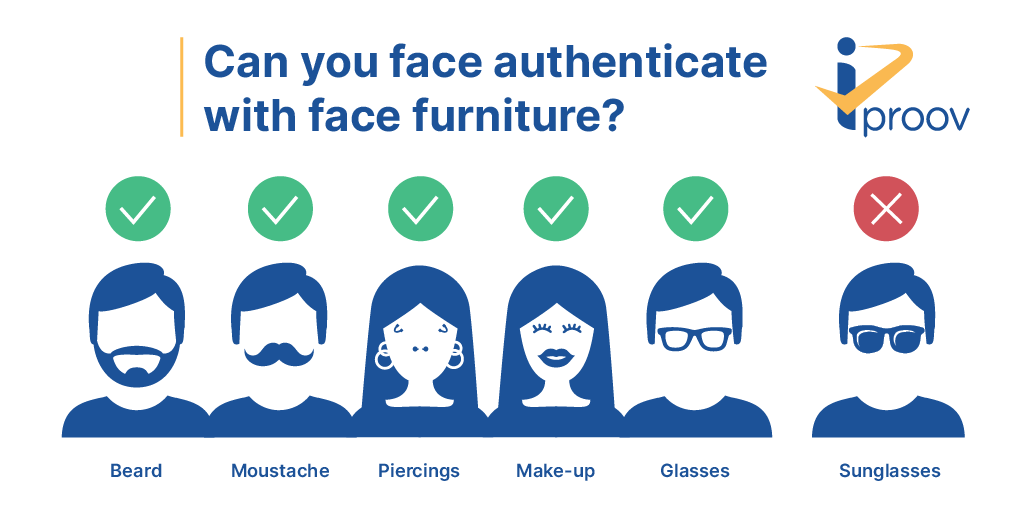December 17, 2021
- “Do I need to take my glasses off when I iProov?”
- “I used to have a full beard—will face verification still work now I’ve shaved it off?”
- “I’ve grown a mustache for Movember! Will iProov still recognize me?”
These are just some of the questions that we get asked by customers and end-users.
To make a long story short, iProov technology has been designed so we can verify a user’s identity even if the user has what we call ‘face furniture’—glasses, beards, piercings, and so on. For the full story, read on!
Why does face verification need to work with beards and other face furniture?
iProov’s biometric face verification technology has been designed to maximize inclusivity, usability and completion rates as well as deliver the highest levels of security. To do this, we need to be able to detect a wide range of face types and successfully authenticate people regardless of piercings, facial hair, and other face adornments.
If we did not accept face furniture, there could be implications for our customers and users:
- If a face verification system rejects genuine users simply because they have grown a beard or added a nose piercing, the false reject rates (FRR) would go up. A false reject is when a genuine user is rejected, and it causes frustration to the user as well as issues for the bank or other organization, which then has to provide alternative means of authenticating the user.
- If we asked users to remove their glasses to complete a verification or authentication, it would slow the process down. This makes it inconvenient for the user and can reduce completion rates if the user abandons the process.
This is why it is important that iProov can verify and authenticate users even if they have face furniture.
Can beards and other face furniture break the iProov authentication process?
In most scenarios, no. Our technologies accommodate most face furniture, including beards and mustaches, piercings, make-up, headscarves, or the wearing of glasses. Users are not required to remove these items to authenticate, which improves the user experience and ensures maximum completion rates.
There are some exceptions. For example, items that fully obscure the eyes can affect the verification and authentication process, as the eyes are a crucial part of determining the authenticity of an individual. A user wearing sunglasses will be asked to remove them.
Theatrical make-up may also trigger a failed authentication, as very thick make-up can resemble masks used in spoof attacks.
But in most other cases, iProov’s face verification will work even if a user is wearing face furniture.
Do masks and face coverings prevent face verification?
iProov’s technology has not been designed to authenticate people wearing face coverings.
How does iProov define a face covering?
A ‘face covering’ is something that is intended to be removed from the face. This is different from, say, glasses or face piercings, which tend to remain on the face and which our systems will accommodate for the purpose of biometric verification.
- Face coverings: usually only obscures a part of the face, such as a COVID type protective covering.
- Masks: can be paper or other materials intended to spoof a system to enable an imposter or fraudster to gain unauthorized access.
iProov and face furniture: a summary
- Most items of face furniture do not affect the iProov face verification or authentication process, although there are a few exceptions.
- Beards, mustaches, piercings, headscarves, glasses, make-up can all be accommodated by iProov systems.
- Sunglasses obscure the eyes, which can affect the successful authentication of a user.
- Heavy theatrical makeup can resemble a mask and could be rejected.
- Face coverings that obscure part of the face will likely prevent a successful face authentication and will need to be removed.
- By accommodating most types of face furniture, iProov allows the widest range of people to authenticate successfully and maximizes inclusivity, usability, and completion rates for our customers.
To see how iProov can help your business to deliver biometric verification and authentication with outstanding usability, high customer completion rates, and top-level security–book your demo here or contact us.
